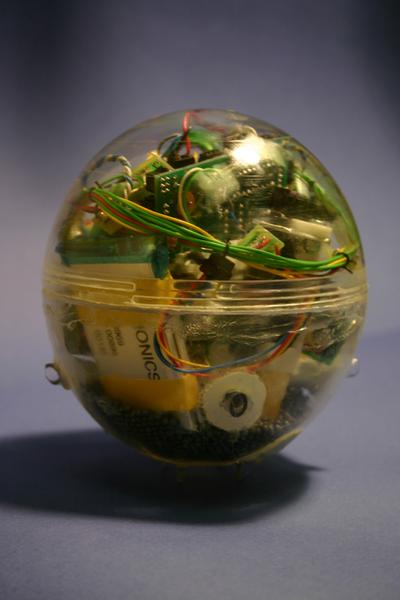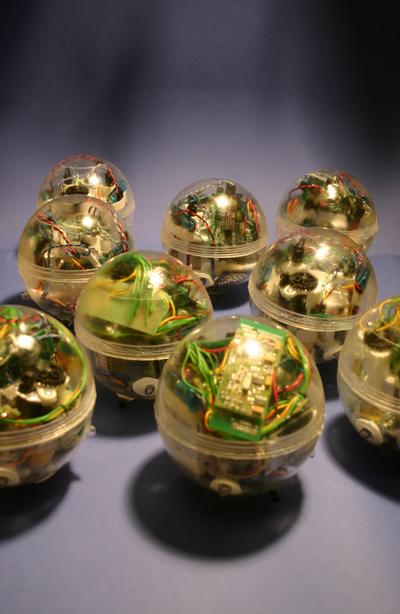During the course of the project, the following people were involved in the HYDRA project in Edinburgh:
- John Hallam (Head of group)
- Tim Taylor (Day-to-day head of group, biologically-inspired controllers, some firmware development)
- Peter Ottery (PhD student, modelling of self-organisation in biological cells)
- Ali Yener Boztas (research fellow, robot CAD/CAM, firmware development)
- George Konidaris (research associate, biologically-inspired controllers, firmware development)
- Nils Roeder (research associate, firmware development)
- Finlay Stewart (research associate, METAMorph software development)
The group in Denmark developed terrestrial modules called ATRONs, which, in contrast to the HYDRONS, could physically connect to each other in various ways. An article on the ATRONs appeared in New Scientist, and they were also mentioned in an article in Wired.
I developed a genetic regulatory network (GRN) inspired controller for the HYDRONs (described here). Later on I worked with Pete Ottery to combine the GRN controller with his Cellular Adhesion Molecule (CAM) system, so that the GRN is controlling the expression of CAMs on the surface of each robot. The combined controller is described here and here.

An image of the final version of the HYDRON hardware, containing all mechanical and electronic systems, including optical communications

A collection of 9 fully assembled
HYDRONs (the front four include the optical communications system, the
others do not)